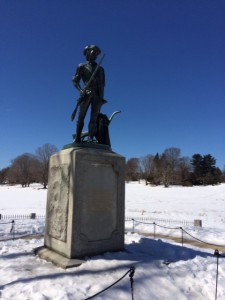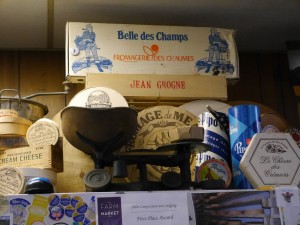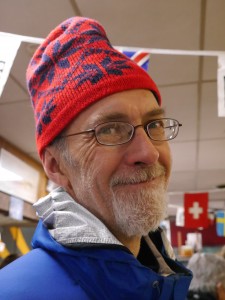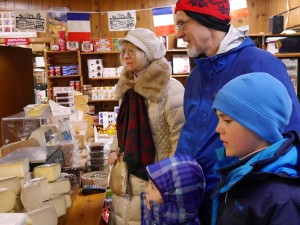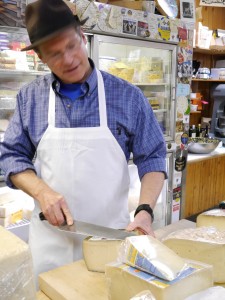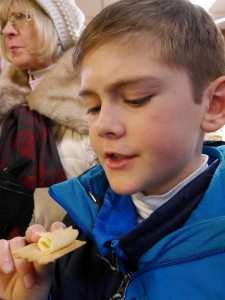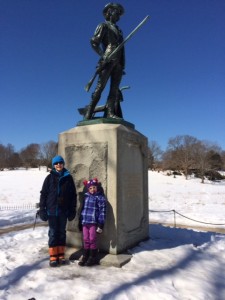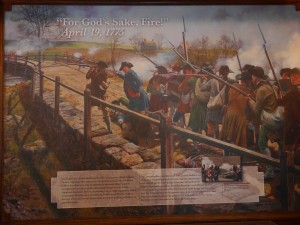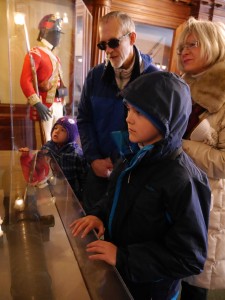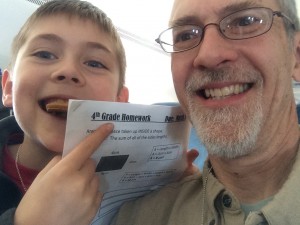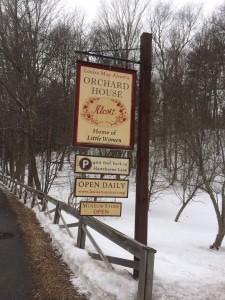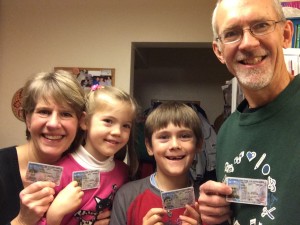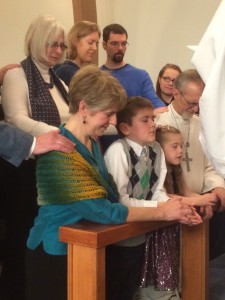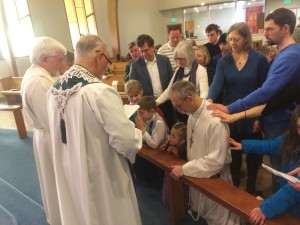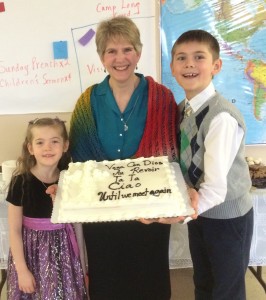Monthly Archives: March 2014
Sampling at the Concord Cheese Shop
American Revolution
Today we went to the North Bridge in Concord. This is the place where the American Revolution started, when British troops fired at the Concord Militiamen on April 19, 1775. After the British soldiers fired, the leader of the Militia said, “For God’s sake fire!” To the Militiamen’s surprise, the most powerful army in the world (at that time) turned and ran away. Overnight the word was spread that arms and volunteers were needed, and within a few days, 20,000 Militiamen answered the call and surrounded Boston. The statue I’m standing next to with my sister Naomi is called “The Minuteman,” and stands at the edge of the North Bridge over the Concord River. It was sculpted for the 100th anniversary of that battle by Daniel Chester French, age 23, a young man from Concord, who would go on to sculpt the Lincoln Memorial statue in Washington DC.
The shot heard ’round the world
Ralph Waldo Emerson
On the way to Boston
A sense of history
On our first day in Massachusetts we visited the Orchard House, the family home of Amos Bronson Alcott, a teacher and Transcendental philosopher, his wife, Abigail Alcott, an independent-minded 19th century woman who was one of the first paid social workers in Massachusetts, and their children ~ Anna Alcott Pratt, who had a flair for acting; Louisa May Alcott , well known author and advocate for social reform; Elizabeth Sewall Alcott, a talented musician and the “Angel in the House,” who died shortly before the family moved to Orchard House; and May Alcott Nieriker, a very gifted artist.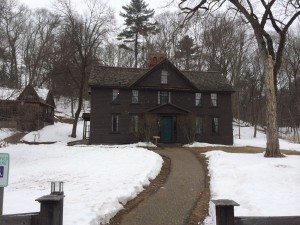
We stood in the very rooms where the young Alcott women entertained their parents and others with original plays penned by Louisa; we saw the desk — built for her by her father between two windows in her upstairs bedroom — where Louisa wrote “Little Women” over the course of six weeks, (often writing up to 14 hours a day!); and witnessed fine examples of May’s accomplished art. The Alcotts counted among their friends the likes of Ralph Waldo Emerson, Henry David Thoreau, and Nathanial Hawthorne, and were part of a vibrant literary and artistic community during the middle years of the 19th century. Far ahead of his time, Bronson Alcott encouraged his daughters to pursue fields of endeavor to which they were drawn and in which their gifts lay rather than fulfill standard roles assigned them by gender. Of equal importance in the Alcott family was the expectation that one should live out a life of service to others. Bronson, Abigail, and their daughters did this on a daily basis without reserve, and with a generosity of spirit, time, and talents that was, to them, second nature, but was, and is, to others an exemplary lifestyle to be emulated.
As we walked through the Alcott’s home and listened to our tour guide telling us the stories of their lives I found myself deeply moved and inspired. In spite of great physical hardship, this family lived rich lives of thankfulness and abundance — not abundance in the sense of physical possessions, but abundance in community, friendships, talents, passion, intellectual curiosity, and love. Standing in the middle of the family’s common rooms, it was as if I could actually feel the love and camaraderie, the warmth and devotion that these family members shared. I think this is what moved me as much as anything else — their appreciation for the gift of family and the joy they seemed to take in living our their lives together with such a sense of creativity, appreciation for one another’s gifts, selflessness, and generosity.
What is it that makes it possible for men and women to entertain thoughts and ideas that run so counter to the prevailing attitudes and expectations of their time? How was it that in and around this small community of Concord there was such a concentration of free thinkers and gifted writers and artists? We have found ourselves pondering these questions as we spend time in this historically rich corner of our country!




